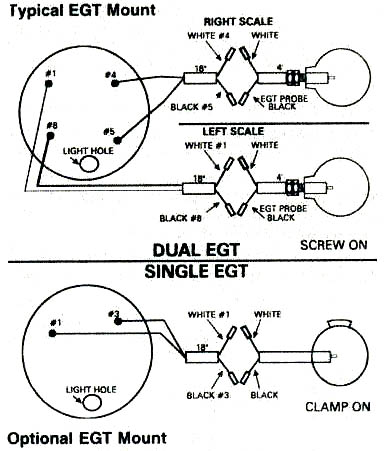Exhaust gas temperature gauge, exhaust gas temperature gauge wiring diagram. |
|
|
|
|
|
|
|
||
| Exhaust gas temperature gauge Westach, Westberg, engine gauge wiring diagrams. | ||
|
With the cost of our engines
getting up into the thousands of dollars - it only makes
sense to invest in "temperature gauges" to help
monitor them. A gauge that I feel should be on all two
stroke aircraft engines is the EGT or Exhaust Gas Temperature gauge. This gauge is a reliable measurement tool which measures the exhaust gases as they exit your engine. A rich fuel/air mixture which can be caused by improper jetting, clogged air filter, improper prop setting, will generally show up as a cooler temperature. While too lean a mixture, which can be caused by an air leak or fuel blockage, can result in overheating and engine seizure. The proper location of the EGT probe on the exhaust manifold is extremely important. Think of this probe as a "thermometer" - like that used to measure a persons temperature. To get a proper reading - the probe location is critical! Mounting the
probe too close to the piston or too far away will result in an
incorrect reading. The probe needs to be
located in the center of the manifold from all
directions. Install the probe before reinstalling the
manifold. As you are drilling, you will use the hose
clamp type probe. This probe needs 7 AN 3 washers placed
on the probe prior to installation. By this I DO NOT MEAN the center of the Y
pipe The probe should
not bottom out or touch the other side of the manifold,
it should be "suspended in the gas
stream" use a AN-3 washer
under the strap to raise it if necessary. All
ROTAX two stroke engines should have the probe placed 3.92* from the
piston skirt. The 2 inch round EGT the gauge will mount
from the front of the panel, an will require a 2 1/16" round hole,
a U bracket holds it in place.
The square 2 inch EGT needs a 2 1/4* round hole, and mounts from the rear using four screws from the front to hold it in place. The 3 inch round EGT requires a 2 7/8" round hole, and uses a U bracket to hold it in place. The 3' square gauge requires a 3 1/8" round hole, again mounting from the rear using four screws. The EGT gauges require probes
which come with 4' of lead. To Install the probe into the 3/16" hole, and tighten up the clamp. On newer model engines it is not necessary to drill holes as they are already installed, the newer manifolds require the newer style of "bayonet probe." For pilots needing to
extend the terminal cable, it can be lengthened to a maximum of 15'
without affecting the accuracy of the instrument. Do not route these wires with any wires from an AC source, such as a lighting coil, spark wires, tech wires, etc. The EGT operates on .004 milli volts. Running near an AC source will result in incorrect readings. EGT a must for safe flying!
An EGT "Pyrometer" gauge monitors the temperature of the exhaust gases as they exist the combustion chamber. Thus it is very important that EGT probe be properly placed in the exhaust system. All Rotax aircraft engines have a tuned exhaust system developed specifically for our application. An EGT can be used to maximize your engine performance, while monitoring its temperature for signs of problems. It is important that you
have correct probe placement as outlined earlier. It is
also important that you verify the EGT readings A reading on an EGT of 1100 to 1200 degrees F should give a nice tan coloured spark plug. Lower readings should give darker colours while higher readings grey/white colours. Once you have verified a
spark plug colour and seen where your gauge reads with
the proper colour then it is now more important to watch
for a CHANGE in the gauge reading It is important to set your engine up for proper fuel to air mixture, your egt gauge and probes can aid in doing this. A lean mixture will run hotter on the EGT. A rich mixture will run cooler on the EGT but will make increasingly less power. Ideally the highest EGT temps should come in at your cruise or "lean burn" settings usually 5200 to 5800 rpm. While some might argue that full throttle should give the highest readings, I have found that if everything is set up right, with the PROP limiting the engine to the maximum rpm allowed FULL power application generally result in LOWER readings. The reasons for this are, the engine fan is supplying the maximum amount of air, the carb is supplying the maximum amount of fuel, the plane is usually traveling a higher speeds resulting in cooler conditions. None the less 1,000 to 1,200 degrees is the area you are trying to find. AGAIN using the spark plugs to "fine tune" the engine. The EGT can also pick out "hot spots" in the range. These are areas where the engine "spikes". This could happen while backing down on power from full throttle, or while going from a lower to higher rpm setting. By using the EGT gauge you can fine tune the jetting to your application and loads. Reason for EGT temperature changes include: 1. Air intake leak. 2. Air fuel mixture too lean 3. Air fuel mixture too rich 4. Changes in density altitude 5. Changes in relative humidity 6. Changes in air temperature 7. Pre-ignition or detonation 8. Fault spark plug or ignition system 9. Improper prop load 10. Poor quality or grade of fuel 11. Improper fuel air ratio, plugged main jet, failed needle jet, or clip |
||
How does an exhaust gas temperature gauge work? |
||
|
An EGT gauge comes with
probe(s) or thermocouplers thus do not require an outside
power source. The probes send out a small signal to the
gauge, making it important that they have good
continuity, are properly placed in the system. New Rotax
engine come with the manifolds already set up to accept a
newer style bayonet probe. To properly monitor the engine each cylinder should have its own probe and gauge, especially on engines with dual carbs. You actually have TWO engines when you look at it. Each cylinder has its own fuel supply, own ignition system, piston and exhaust. By having two monitoring systems you can compare the "performance" of BOTH your engines. Installation - This is a very simple operation a single gauge requires you to hook up two small wires to the rear of the gauge. The white lead is connected to the #1 post on the gauge The black lead is connected to the #3 post. On the dual gauge the white lead goes to the #4 pin while the black lead goes to the #5 On the other cylinder the #1 goes to while the # 8 goes to black. Please note on the dual gauge diagram above 4 and 5 are on one side of the gauge while 1 and 8 are on the other. Proper polarity
IS required and good continuity is a MUST. One last thing - PRIOR to installation CHECK the gauge and probe using a propane torch or other heat source. I can't tell you how many times I have had to crawl back up under the dash to switch wires around on the back of the gauge, or junction box when I didn't do this. Ultralight Aircraft News |
||
|
|
||
| Return to Main Index for this section | ||
 |
||
| Ultralight Aircraft News Web Magazine EMAIL for l Information. No part of this publication may be copied or distributed, transmitted, transcribed, stored in a retrieval system, or translated into any human or computer language, in any form or by any means, electronic, mechanical, manual, or otherwise, without written permission of Ultralight Aircraft News. By copying or paraphrasing the intellectual property on this site, you're automatically signing a binding contract and agreeing to be billed $10,000 payable immediately. Copyright Ultralight News |

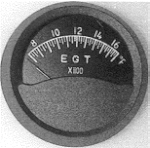
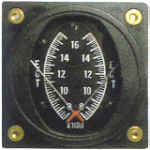
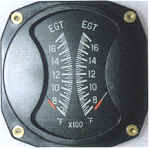 install the probe, drill a 3/16" hole in the center
of the exhaust pipe at the recommended distance use
the table below.
install the probe, drill a 3/16" hole in the center
of the exhaust pipe at the recommended distance use
the table below.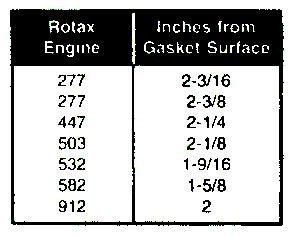
 by careful examination of the spark plugs.
by careful examination of the spark plugs.  from this "normal reading."
from this "normal reading."